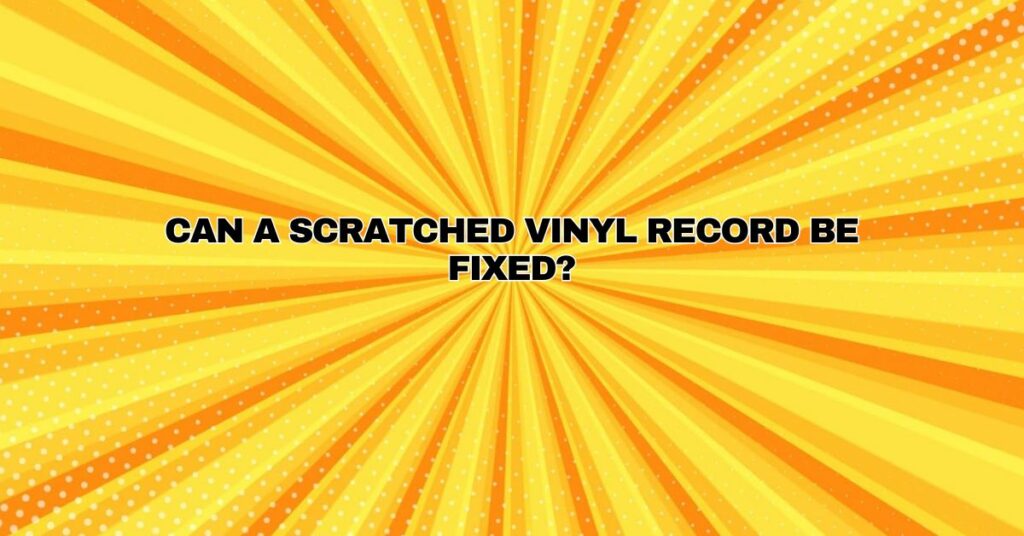Vinyl records, cherished for their warm, analog sound, have made a remarkable resurgence in recent years. However, these beloved analog treasures are not immune to wear and tear, and scratches can mar their grooves, leading to unwanted noise and audio quality issues. The question that often arises among vinyl enthusiasts is whether a scratched vinyl record can be fixed. In this comprehensive guide, we will explore the possibilities and techniques for restoring scratched vinyl records and how to determine the success of your efforts.
Types of Record Scratches
Not all scratches are created equal, and understanding the nature and extent of the damage is crucial before attempting any restoration. Here are the most common types of record scratches:
- Surface Scratches: These are shallow, superficial scratches that generally affect only the top layer of the vinyl. Surface scratches can often be repaired effectively.
- Groove Scratches: Groove scratches are deeper, penetrating the grooves of the record. These are more challenging to fix and may not be fully restorable.
Assessing the Damage
Before diving into the restoration process, it’s essential to assess the extent of the damage. Here are some steps to follow:
- Clean the Record: Start by cleaning the record thoroughly with a dedicated record cleaning solution and a soft brush. This will remove any surface debris and make it easier to assess the damage.
- Visual Inspection: Examine the record under good lighting. Look for the presence of scratches and their depth. Surface scratches may appear as thin, light lines, while groove scratches can be deeper and more apparent.
- Listen Carefully: Play the record and listen for the effects of the scratches. Surface scratches might produce clicks and pops, while deeper groove scratches can cause skips, jumps, and more severe audio distortions.
Techniques for Fixing Surface Scratches
For surface scratches, there are several techniques you can try to restore the record to playable condition. Here are some common methods:
- The Magic Eraser Method:
- Dampen a white, non-abrasive Magic Eraser (melamine foam) with water.
- Gently rub the Magic Eraser along the direction of the grooves on the scratched area.
- Rinse the record and let it dry thoroughly.
- Wood Glue Method:
- Apply a thin, even layer of wood glue (PVA glue) to the scratched area.
- Allow the glue to dry completely, which may take 24-48 hours.
- Carefully peel off the dried glue, which should lift dirt and debris along with it.
- Vinyl Record Cleaner:
- Use a specialized vinyl record cleaner with a soft brush to gently clean the scratched area.
- Follow the manufacturer’s instructions, as some cleaners are designed to reduce the effects of surface scratches.
Professional Restoration Services
For valuable records or those with extensive or deep scratches, it’s advisable to consider professional record restoration services. These experts use advanced techniques and specialized equipment to address deep scratches and restore records to optimal condition. They may use processes like vacuum cleaning, microgroove repair, and even resurfacing to remove scratches effectively.
Preventive Measures
While fixing scratches is possible, it’s always better to prevent them. To keep your vinyl records in the best condition:
- Handle records with clean, dry hands.
- Use anti-static brushes to remove dust before playing.
- Store records vertically in protective sleeves and avoid extreme temperature fluctuations and direct sunlight.
Conclusion
The ability to fix a scratched vinyl record largely depends on the type and extent of the damage. For surface scratches, several DIY methods can be effective, while deeper groove scratches may require professional restoration. By combining proper care, preventive measures, and occasional maintenance, you can continue to enjoy the timeless charm of vinyl records while minimizing the risk of scratches and sound degradation.


